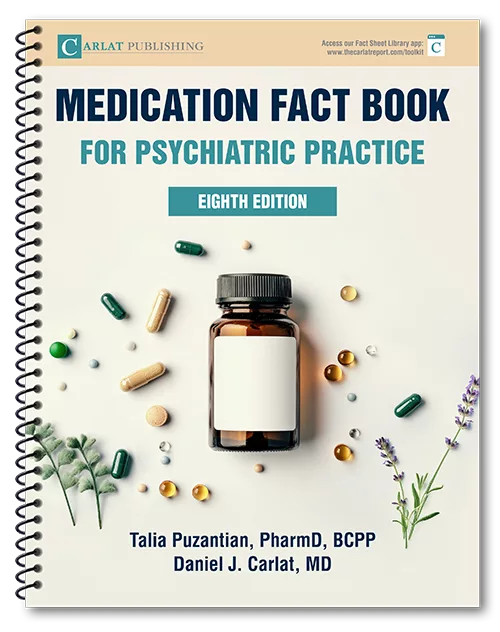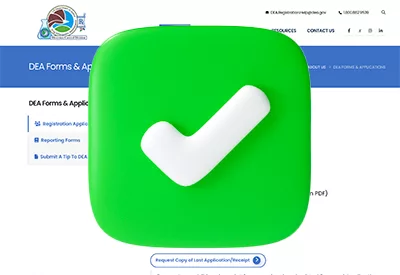Sometimes we have a window of opportunity to make a difference. Here, we discuss time-frames where lithium, clozapine, and metformin have the greatest benefits.
Publication Date: 02/10/2025
Duration: 17 minutes, 23 seconds
Transcript:
KELLIE NEWSOME: Sometimes we have a window of opportunity to make a difference. Here, we discuss time frames where lithium, clozapine, and metformin have the greatest benefits. Some interventions work better when we get the timing right, and this new series is going to highlight windows of opportunity you won’t want to miss.
CHRIS AIKEN: Welcome to the Carlat Psychiatry Podcast, keeping psychiatry honest since 2003. I’m Chris Aiken, the editor-in-chief of the Carlat Psychiatry Report.
KELLIE NEWSOME: And I’m Kellie Newsome, a psychiatric NP and a dedicated reader of every issue. “Life is short, the art is long, opportunity fleeting, experiment treacherous, and judgment difficult.” With those sobering words, Hippocrates summed up medical practice as it was in 400 BC and as it very much is today. In the next few episodes, we’re going to focus on those fleeting opportunities where you might just save a life if you act with good speed.
CHRIS AIKEN: 1. First, A faster way to diagnose bipolar disorder. In 1992, Robert Hirshfield and colleagues took a look at what was happening in the real world of bipolar treatment. They surveyed 500 members of DBSA, the Depression and Bipolar Support Alliance, which was known back then as the National Depressive and Manic-depressive Association, and what they found was pretty discouraging. Only 1 in 3 got diagnosed correctly in their first year of treatment, and 34% waited over 10 years to get accurately diagnosed. Ten years later, they ran the survey again to see if things had changed, but the results were nearly identical (Hirschfeld RM et al., J Clin Psychiatry. 2003, 64(2):161-174). This time, Hirshfield took action. He developed a brief screening instrument that tallied 13 symptoms of mania on paper, called the Mood Disorder Questionnaire or MDQ, enjoyed widespread use. When it was positive, it was often right, with a 79% specificity, which rivals the accuracy of the average psychiatric interview. But the scale missed a lot of cases that turned out to actually have bipolar disorder, and these false negatives dragged its sensitivity for picking up on the diagnosis – which is what a screening instrument is supposed to do - down to 66%.
KELLIE NEWSOME: That’s interesting because, in practice, I hear a lot more talk about false-positive than false-negatives. I mean clinicians tell me about patients who scored high, but they don’t think they have bipolar disorder. I rarely hear about patients who scored low when they actually had the disorder.
CHRIS AIKEN: Yeah, and if we look at the statistics on this MDQ, we ought to be thinking the opposite way. I mean, when the score is low, we ought to doubt the test – as it’s going to miss 34% of cases when the score is low. And when the score is high and we think they don’t have bipolar, we ought to doubt ourselves, because there’s a 79% chance that the test is right and we are wrong. And all of these problems, including how people use it, may explain why the numbers still didn’t budge, even as many practices adopted screening instruments for bipolar into their new patient forms – something the FDA recommends – by the way – in the prescribing information for all antidepressants. But all those screening efforts didn’t move the needle. Across 20 studies, the average delay between starting treatment and getting the diagnosis right for bipolar is 7 years, and it’s even longer in children, 15 years.
KELLIE NEWSOME: Here’s why that matters. Most of these cases are misdiagnosed as depression or anxiety and given antidepressants, and antidepressants worsen the course of bipolar disorder, particularly when they are used without a mood stabilizer. A lot of this data is observational, but when it comes to controlled trials, we have pretty good evidence antidepressants raise the risk of rapid cycling over the long term. Moving down the evidence later to the observational, there are two phenomena you ought to be aware of besides the well-known one of acute antidepressant-induced mania.
1. The first is antidepressant-induced treatment resistance. The more antidepressant trials a patient with bipolar is exposed to, the greater their risk of developing resistance to all treatments. This is a hard one to untangle, as it may be that patients with poor prognostic factors end up on multiple antidepressant trials, to begin with, but a study from Jay Amsterdam’s group that adjusted for confounding variables suggests the opposite causation – that the antidepressants may be causing treatment resistance in bipolar. And Jay Amsterdam doesn’t have an axe to grind on this one – he’s one of the leading proponents of antidepressants in bipolar disorder.
2. The second is the ACID syndrome, which stands for antidepressant-associated chronic irritable dysphoria. It was first reported in 2005 as part of the STEP-BD trial, where Rif El-Mallakh and colleagues noticed that bipolar patients in this observational trial who took antidepressants for more than a year were 10 times more likely to develop an insidious, low-grade symptoms of dysphoria, irritability, and middle insomnia… it almost looked like a personality disorder. This doesn’t happen to everyone – ACID is seen in about 1 in 7 patients with bipolar disorder on long-term antidepressants, and we can’t say for sure that antidepressants are the cause – for that, we’d need controlled trials.
CHRIS AIKEN: Another reason why this delay in diagnosis matters is that bipolar is an illness that progresses in stages, much like the stages of cancer. The most popular staging model for bipolar has 5 levels, numbered from zero to 4.
KELLIE NEWSOME: Stage zero is just a genetic risk – the person has no psychiatric symptoms, but they have a first-degree relative like a parent or sibling with bona fide bipolar disorder. Stage 1 is when those genes start to act up, but they don’t go all the way to bipolar. So they have a first-degree relative with bipolar disorder, and they start to have depression or other major psychiatric symptoms but no mania. At this level, the recommendation is to be very careful with antidepressants – maybe try a low-risk one like bupropion, but if there are any psychiatric side effects, pivot quickly to a mood stabilizer. Psychotherapy and omega-3 fatty acids are also recommended at this prodromal stage. Next is Stage 2, which is when they first meet DSM criteria for bipolar by virtue of having a single manic or hypomanic episode. Stage 3 is when they start to have recurrent episodes. Stage 4 is when those episodes become unremitting, with frequent symptoms or rapid cycling over at least 2 years. As patients progress from one stage to the next, some unfortunate patterns emerge. Their cognition gets worse. By stage 4, most patients have enough cognitive problems that they aren’t able to function well even when they aren’t manic or depressed. On brain imaging studies, we see more degeneration. And their episodes become more autonomous - they come on independent of stress as if kindled by some habit in the brain.
CHRIS AIKEN: Once patients move up in the stages, it’s hard to move back down, so the goal in bipolar treatment is to keep patients from climbing up this neuroprogressive ladder. Last year, researchers in Milan and Miami used a staging model to see how 100 bipolar patients progressed over 10 years. After 3 years, the majority – 86% – of the patients had progressed from stage 2 to 3 – (remember they all start out at stage 2 because its the first diagnosis of bipolar) so they went from new onset bipolar to recurrent episodes, and by 5-8 years nearly all – 97% - transitioned to recurrent bipolar. Once they have recurrent episodes, the risk is that they’ll develop unremitting episodes (stage 4). After 5-8 years, a third of patients with recurrent episodes went on to have the unrelenting episodes in stage 4. So what we are gathering there, is if you are in treatment for bipolar, after about three years, you are probably going to start to have recurrence; and after about 5-8 years (not always), but about a third will progress to the more severe form. And here’s another way to look at the cut-off for timing when things have progressed to a level that is hard to go back from here we are talking about a cut-off of a number of episodes, not years, and the cut-off here, is somewhere between 5-10 episodes, that is when treatment resistance starts to set in bipolar disorder. This comes from a study that compared response rates in people who’ve had fewer than five episodes versus those who’ve had 10 or more episodes, and there was a big difference in response to all phases of the illness, whether we are talking about acute mania, acute depression, or maintenance and prevention (Berk et al. 2011). All these figures are for people in treatment for bipolar. But in this podcast, we’re worried about the ones who don’t get diagnosed for 7 years. What happens to them? Well, where’s what we know from Roberg Hirshfield’s study? During that delay in diagnosis, 80% had relationship problems, 70% had job or school problems, 55% had financial difficulties, and 37% developed substance use disorders. Maybe they would have had this anyway, but after they got the right diagnosis and started treatment for bipolar, those awful numbers dropped by 30-70%.
KELLIE NEWSOME: Let’s pause for a preview of the CME quiz for this episode. Earn CME for each episode through the link in the show notes.
1. Which screening instrument for bipolar disorder can be completed in less than 2 minutes and has a sensitivity of 90% and specificity of 80%?
A. The Mood Disorder Questionnaire
B. The Rapid Mood Screener
C. The Bipolarity Index
D. The Physicians Health Questionnaire
CHRIS AIKEN: Putting all this and a lot of other research together, I can only take a rough stab at the window of opportunity in bipolar disorder, where you want to catch it before things get out of hand. It’s within 1-3 years of the first manic or hypomanic episode, or a better way of looking at it is by the number of episodes. Things start to change after three episodes, in my experience, and that is pretty consistent with the study that I just quoted earlier. After that, the patient isn’t as easy to treat, and like Kellie said, their episodes start to have a life of their own – coming on regardless of whether there is a stress. To refine that further in terms of polarity, I’d place the cut-off at two episodes of mania or three episodes of depression – it’s after those cut-offs that things start to go downhill for the patient. But more important is what you can do to prevent them from reaching that point.
KELLIE NEWSOME: And that starts with an accurate diagnosis. For the past 10 years, Dr. Aiken has been recommending the bipolarity index. It’s a diagnostic instrument developed by Gary Sachs at Mass General and a panel of bipolar experts. It includes symptoms, but unlike other screeners, it goes beyond symptoms to rate other markers of the illness, like age of onset. Bipolar is more likely if the mood problems began between age 15-20. And family history – the more genetic loading, the more likely the bipolar. And treatment response – when people get more irritable, anxious, or depressed on antidepressants, it’s a strong sign of bipolar, even if they don’t develop full mania. Postpartum depression, psychotic depression, atypical depression, recurrent depression, anxiety disorders, and substance use disorders are all soft signs of bipolar disorder that add a few points on this 100-point scale. Dr. Aiken ran the validation study of this tool, and he found it had much better accuracy than any of the symptom-based screener – the bipolarity index scored an unprecedented 90% for both sensitivity and specificity, and you can find it at https://chrisaikenmd.com/bipolarityindex.
CHRIS AIKEN: I have an obvious bias toward the bipolarity index, but that’s not the tool I’m going to recommend today. In 2021, Roger McIntyre and colleagues developed a shorter version of the bipolarity index, whittling it down its 50-odd items to the ones that have the highest yield and converting it from a clinician-rated scale to a patient-rated screener that can be completed in less than 2 minutes. When I read that in the study, I didn’t believe it, but when I give this new scale to patients, they’ve usually finished it by the time I open up my EMR box to put the data in, which maybe says something about the speed of EMRs.
KELLIE NEWSOME: The tool is called the Rapid Mood Screener, and it has a sensitivity and specificity that comes close to that of the bipolarity index: 90% sensitive and 80% specific.
CHRIS AIKEN: And that’s what you want in a screener. You want it to be more sensitive, to pick up on a lot of cases, because you’re never going to rely on this for the diagnosis. You’ll need to confirm those positives with a structured interview for past manias and hypomanias or with the bipolarity index – which is a diagnostic instrument, not a screening tool.
KELLIE NEWSOME: The Rapid Mood Screener has just six items; some of them are symptom-based, and others are historical markers like age of onset or response to antidepressants. It’s a great tool to include in your new patient paperwork, but it does have one limitation. It was only validated for bipolar I, not bipolar II. There’s some interesting history there. The validation study was funded by the makers of cariprazine, a medication that’s approved in bipolar I, and the manufacturer didn’t want to run afoul of the FDA by funding a study that would screen for bipolar II – something, God forbid, they aren’t even indicated for!
CHRIS AIKEN: But, you can easily modify the scale to pick up bipolar II just by adding an item that allows for a 4-day cut-off of manic symptoms instead of requiring 7 days. I’ve done that in the version I use, which is available at https://chrisaikenmd.com/rmsii. I’m in the process of validating this version in bipolar II patients, and I’ve done an informal test by matching its items up with those in the database I used for the bipolarity index, and it checks out well.
KELLIE NEWSOME: The bottom line. Bipolar is a disorder that gets worse with most of the mainstream psychiatric treatments like antidepressants and stimulants, and if you keep on doing what we’ve all been doing your patients are going to wait 7 years to get the diagnosis right. Think you’re immune to those stats? Remember the law of averages, that the average person thinks they are above average. Don’t let intuition and undue confidence be your guide – use a screening instrument for every patient, at least the MDQ, and you’ll get even better odds with the Rapid Mood Screener. Join us next week for more windows of opportunity. Read the full articles and earn CME credits at thecarlatreport.com, where we have a special offer for our podcast listeners – you can get $30 off your first year’s subscription with the promo code PODCAST. That helps us stay free of influence from the pharmaceutical industry and bring you unbiased information you can trust.


_-The-Breakthrough-Antipsychotic-That-Could-Change-Everything.webp?t=1729528747)



